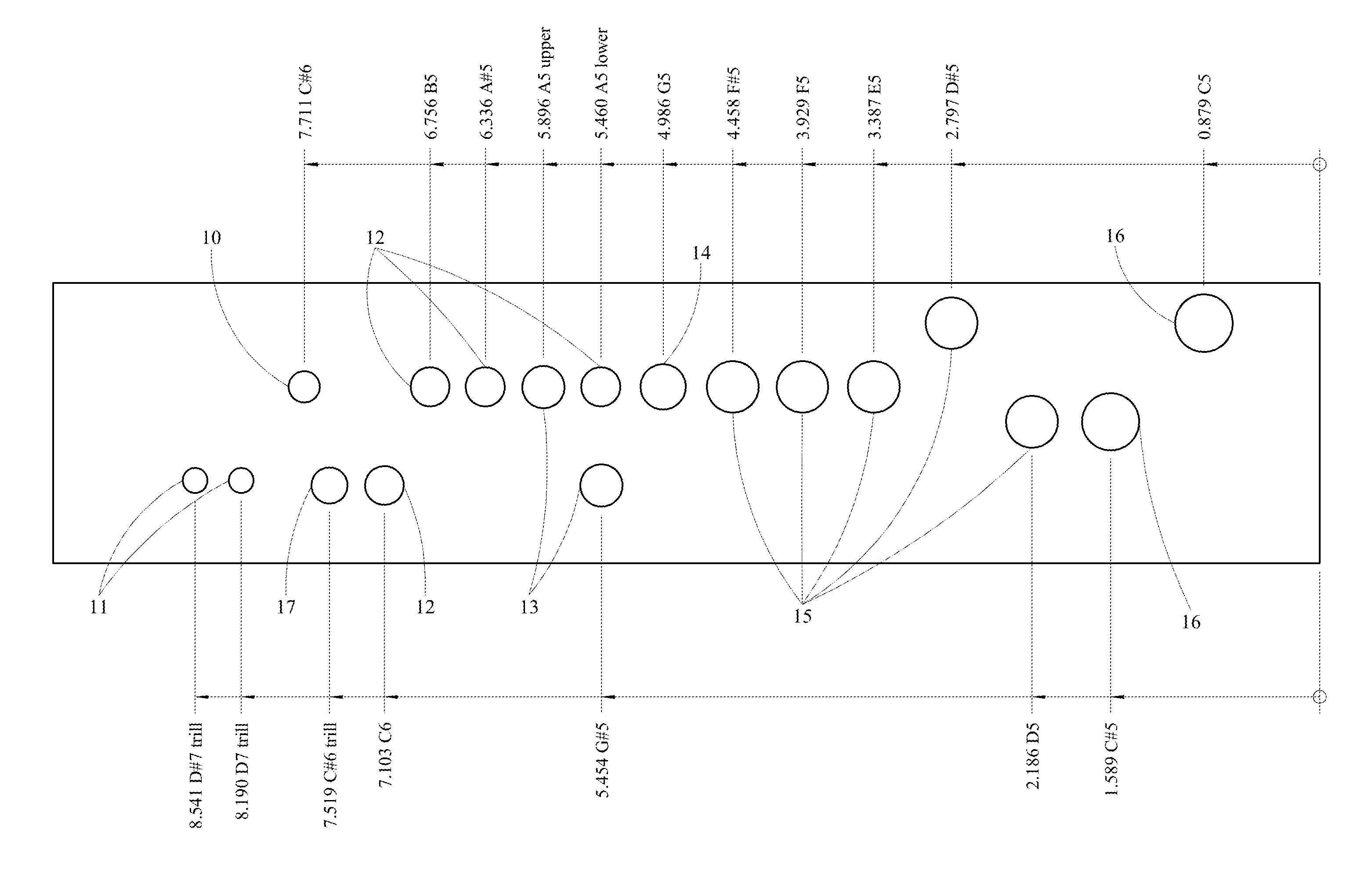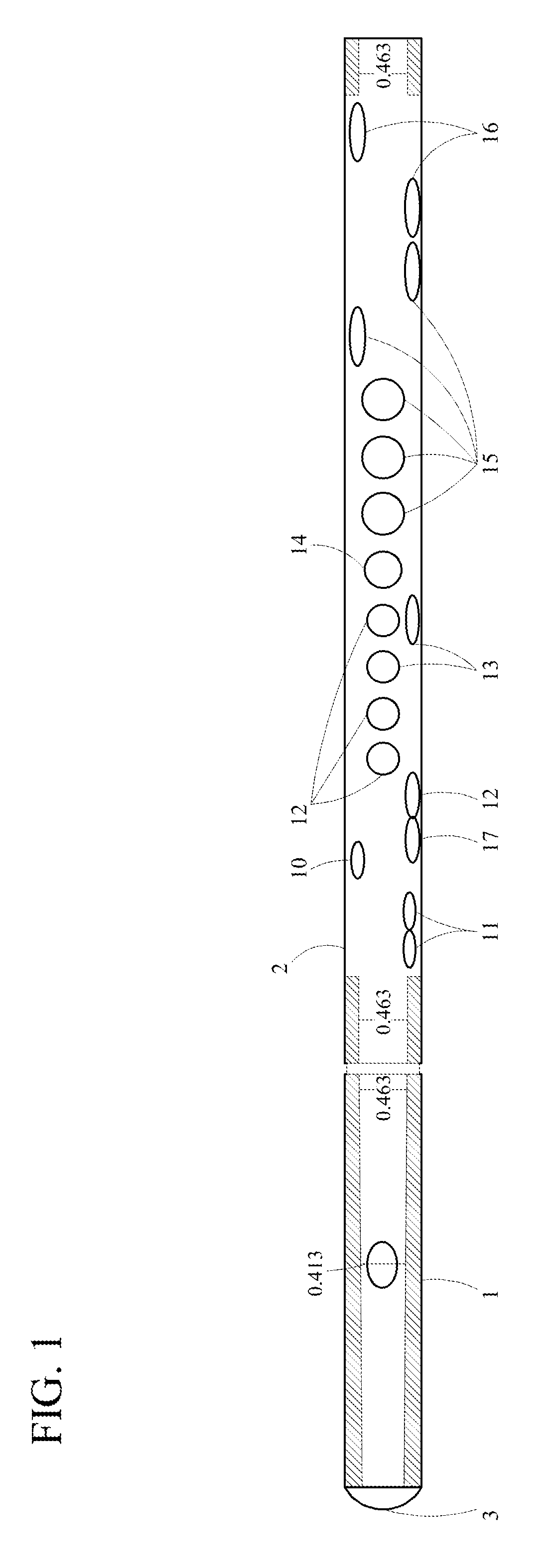Piccolo
a technology of piccolo and octave, applied in the field of piccolo devices, can solve the problems of restricting the choice of piccolo makers, limiting the range of sound volume (dynamics), and human ears not always considering mathematically correct pitches to be in tune, etc., to achieve better intonation, improve sound quality, and improve tone control
- Summary
- Abstract
- Description
- Claims
- Application Information
AI Technical Summary
Benefits of technology
Problems solved by technology
Method used
Image
Examples
Embodiment Construction
[0020]The detailed description set forth below in connection with the appended drawings is intended as a description of presently preferred embodiments of the invention and does not represent the only forms in which the present invention may be constructed and / or utilized. The description sets forth the functions and the sequence of steps for constructing and operating the invention in connection with the illustrated embodiments.
[0021]Generally, the present invention concerns an improved piccolo and piccolo-type instruments having an improved bore and “scale”, which is the tonehole configuration. The improved scale contemplated herein allows the performer to attain better intonation and a fuller, richer sound.
[0022]The piccolo contemplated herein comprises a body section having a cylindrical bore there through. The cylindrical bore through the body section is centered about and coincident with a longitudinal axis of the piccolo and is substantially uniform in diameter (allowing for ...
PUM
 Login to View More
Login to View More Abstract
Description
Claims
Application Information
 Login to View More
Login to View More - R&D
- Intellectual Property
- Life Sciences
- Materials
- Tech Scout
- Unparalleled Data Quality
- Higher Quality Content
- 60% Fewer Hallucinations
Browse by: Latest US Patents, China's latest patents, Technical Efficacy Thesaurus, Application Domain, Technology Topic, Popular Technical Reports.
© 2025 PatSnap. All rights reserved.Legal|Privacy policy|Modern Slavery Act Transparency Statement|Sitemap|About US| Contact US: help@patsnap.com



